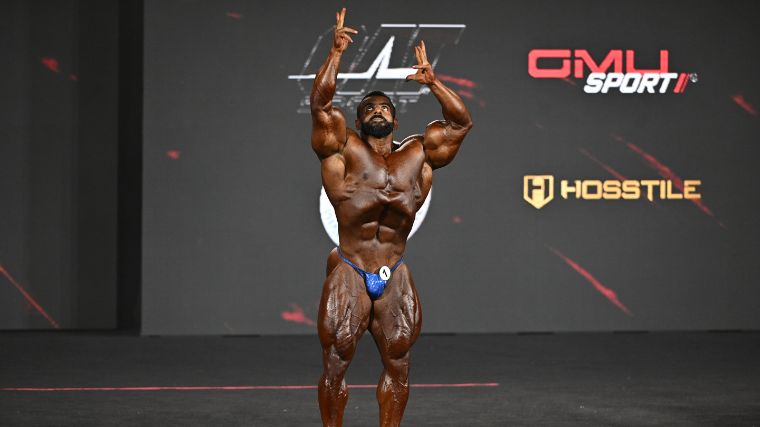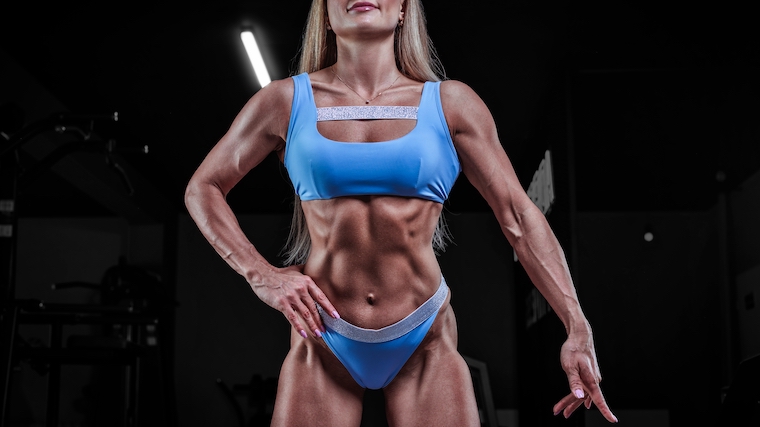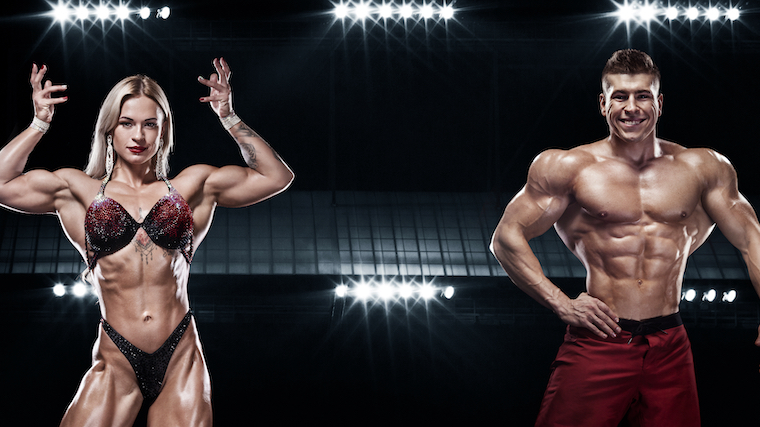When John Haack broke the all-time bench press world record in the 100-kilogram class in powerlifting, there was no need for a second opinion. The record was set. Strength sports rely on provable, empirical measurements to determine the greats of the game. For bodybuilding — which is oftentimes lumped in with the strength sports — becoming a champion can seem less about merit and more reliant on the ebb and flow of subjective opinion.
IFBB Pro League judges recently agreed that Hadi Choopan was the top bodybuilder at the 2022 Mr. Olympia; the most prestigious competition in physique sports. And yet, any spectator could disagree with the combined assessment of the professional judging panel. Ironically, that individual’s opinion couldn’t be proven unequivocally wrong. Even though judges have a scoring system in place to bring some quantify bodybuilding, the sport is still ultimately subjective.

[Read: Seven Types of Bench Press Grips — Benefits and How to Use Them]
From a competitive perspective, the subjectivity in bodybuilding may feel like a glitch in the system. Can anyone really win a game in which the rules are open to interpretation? Probably not. Competitive sports rely on empirical results for legitimacy. As such, maybe bodybuilding shouldn’t be considered just a competitive sport. Maybe it needs to accommodate — and even encourage — assessments based on opinion and emotion.
When regarded as an art form with a competitive arena rather than a sport that has a subjectivity problem, subjectivity becomes a feature, not a bug. Champion bodybuilders impress, inspire, and emblazon themselves upon memory — like any good work of art.
Editor’s Note: This article is an op-ed. The views expressed herein and in the video are the author’s and don’t necessarily reflect the views of BarBend. Claims, assertions, opinions, and quotes have been sourced exclusively by the author.
Is a Bench Press the Same as a Paint Brush?
When you consider how a common goal of bodybuilding is creation, it resembles art more than sport. The majority of people who train some form of bodybuilding are not competitive in their pursuit, yet they are creating something.
As three-time Mr. Olympia runner-up Kai Greene said in a 2016 Facebook post:
Bodybuilding is an art; your body is the canvas, weights are your brush, and nutrition is your paint.
While different than brushes or a musical instrument, a bodybuilder’s toolset — barbells, machines, food scales — facilitate a result that goes beyond the use of the tools themselves. They’re used to create a physical shape that elicits an emotional response from an observer — a silhouette that perhaps a judge might favor or would trigger reactions on social media. The ability to create provoking physical shape is more suggestive of an act of art than a physical act of sport.
When people think of “art,” they picture fine Renoir paintings or grand Beethoven symphonies. These creations are regarded as prestigious and sophisticated, far removed from the clanking, sweating, and grunting of bodybuilding in a crowded gym. How could anyone confuse bodybuilding with art?

[Read: The 6 Best Bodyweight Biceps Exercises for Getting Jacked Outside the Gym]
High, Medium, and Low Art
While there is a vast array of disciplines within art, notions of “high art,” “medium art,” and “low art” have emerged. Determining where bodybuilding best fits in this hierarchy is essential to understanding why it’s considered a sport first and an art form second. The Journal Of Aesthetics and Art Criticism explains how a piece of art’s position as high, medium, or low is based on what the audience needs in order to understand the art itself. (1)
When something feels foreign or hard to understand, it’s often because we lack reference or experience. High art is any art that is accessible only to small numbers of people who have specific reference points. This is why high art is often considered inaccessible or pretentious to a general audience (think abstract paintings at a posh museum or runway performances in elite fashion).
Medium art is any art that is generally accessible and can be appreciated by most, but may not be fully understood by some groups. Think of how the work of J.R.R. Tolkien may not be enjoyable for young children despite its iconic fantasy elements.
Low art is any work that can be appreciated by almost anyone, such as music from famous singers like Beyoncé, television shows like Looney Toons, or, perhaps, even bodybuilding.

[Read: The Fitness Influencer Arms Race: How Content Creators Push the Envelope for Clicks]
Low Art Isn’t Bad Art
It takes little frame of reference to be impressed with a bodybuilder’s physique. You don’t need any unique education to have an opinion about a muscular frame. This degree of accessibility categorizes bodybuilding as “low art.” It is commonly and easily understood; “Big muscles! WOW!”
Often, low art like graffiti, cartoons, and advertisements, gets a bad rap simply because it is so commonplace in popular culture. It’s a frustrating bit of dismissiveness; these forms of low art are every bit as worthwhile as their high-art counterparts.
Bodybuilding often suffers from unfair dismissal. While it’s defensible as art, it is not often thought of as such because the creation — that muscular body of Kai Greene, or Lenda Murray, or a well-built fellow at your local gym — is almost too easily understood and emotionally resonant.

[Read: Bodybuilding Lore Addressed: Can You Really Build a Biceps Peak?]
Bodybuilders Have Been Artists All Along
During his rise to pop culture fame, bodybuilding legend Arnold Schwarzenegger was part of a publicity stunt in the Whitney Museum of Art in New York City. Literally on display as a “living statue,” Schwarzenegger posed just as any competitive bodybuilder might. However, the goal was to evoke emotion as a piece of art would.
Ironically, these emotions were shared by audience members who watched him win any one of his seven Mr. Olympia titles. The emotional reaction is the same, regardless of whether there’s a sporting competition or a judging panel present.
Greene also embodied the artistic side of bodybuilding in New York City. He would often don a mask and pose for commuters on a subway platform. Think of a street musician, but instead of a guitar or keyboard, it was Greene and his massive muscles striking pose after pose with fluid transitions, demonstrating how the physique evokes emotion. He didn’t need a competition stage, only an audience.
These examples suggest that bodybuilding is more an art than a sport by how resilient its value is outside of the competitive arena. For example, simple polaroid pictures of a young Arnold Schwarzenegger taken by legendary pop artist Andy Warhol are currently valued between $8,000 to $12,000 on the auction house Christie’s website.
Granted, these were taken in 1977, right as Schwarzenegger’s star began to rise thanks to the 1977 film Pumping Iron. Still, Warhol’s polaroids highlight the mainstream appeal and novelty that a bodybuilder’s physique has. Like any well-regarded work of art, its value can also appreciate over time.

[Read: Bodybuilder Frank Zane Was Cast as Marvel Superhero in Failed “Silver Surfer” Movie]
Emotion Is the Goal
“Golden Era” bodybuilder Serge Nubret was arguably correct when he said, “Bodybuilding is not only a sport but first an art.” While bodybuilders are referred to as athletes because their practices are, indeed, athletic, what they are doing is an art form. They create something designed to be observed and, in the process, evoke opinion or an emotional response.
This emotional response can be in the form of competitive judges being dazzled or just someone clicking the “Like” button on an image of a physique they admire. It could be an inspiration that triggers motivation to go lift weights or the launching of imagination into visions of powerful superheroes. The emotional response is the point.
While success in other strength sports often relies on empirical, measurable results, success in bodybuilding depends on subjective, impulsive reactions from others. Yes, it can be corralled into a sporting competition, but bodybuilding is a living, breathing art form.
References
-
Ting Cho Lau, Rethinking Low, Middle, and High Art, The Journal of Aesthetics and Art Criticism, Volume 80, Issue 4, Fall 2022, Pages 432–443, https://doi.org/10.1093/jaac/kpac034
Featured Image: Chris Bernacchi